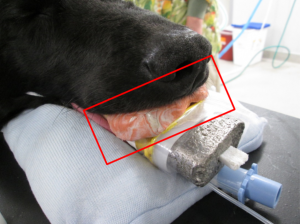Therapeutic Content Guide and Sample Questions
Last verified on April 25, 2025
On this page
PLEASE NOTE: List of Constants and Physical Values for Use on the Part 2 Physics Exams
The ABR provides candidates with a list of constants, physical values, and related information, which can be found on this page. While the list includes many constants and physical values, the ABR does not warrant the list as a compilation of all constants and physical values needed on the exams. Candidates should review the list carefully before their exams to familiarize themselves with the contents and list organization.
Content Guide
The content of all ABR exams is determined by a panel of experts who select the items based on a content guide that the ABR publishes. The content guides are assembled using guidance from medical physics organizations. The content guides are general documents, and individual exam items may not appear to be exactly congruent with the content listed in the guide. In addition, since there is only a limited number of items on any exam, selected items will only be a sample from the larger domain of the content guide. To understand how exam questions are written and learn more about different types of exam questions, please see the ABR Item Writers’ Guide. For a look at the extensive QA process that each question goes through, please see the Illustrated Life Cycle of an ABR Exam Item. For information about the remote exam delivery format and what to expect on exam day, please see the Medical Physics Remote Qualifying Part 2 Exam Guide.- Reference and Relative Dosimetry
- Absolute calibration for photon and electron beams
- Dosimeter design, characteristics, application and QA, including ion chambers, solid state, optical, chemical, film and arrays
- Survey Detector design and application
- Treatment Machines
- Photon/Electron Medical Accelerators, physics, design, beam characteristics, delivery hardware, QA and shielding
- Proton accelerators and beam characteristics
- Specialized machines, e.g., design and function of non-conventional or site-specific external beam delivery systems
- Therapy imaging and room design, patient safety, data transfer and integrity, professionalism and ethics
- Imaging for Therapy Simulation (including physics, equipment design, application, and image reconstruction)
- Shielding and Radiation Safety
- Treatment Localization and Verification Imaging, Image registration
- Quality Control and Error Prevention
- Computing and IT
- Professionalism and Ethics
- Treatment planning for photons, electrons, SRS, SBRT, inter- and intra-fraction variations, planning system safety
- Photon Treatment Planning
- Treatment Planning Electrons
- Management of inter- and intra-fraction variations
- Tx planning system safety and QA
- Brachytherapy, radiation protection, radiation biology
- Brachytherapy, isotopes, delivery systems, planning, QA and shielding
- Radiation Protection regulations, personnel monitoring and special conditions (pregnancy, implanted devices, etc.)
- Radiation Biology
Sample Questions
Simple Questions
- Why are flattening filters used for high-energy photon beams from an accelerator?
- To increase low-energy photons
- To correct for the pulsing of radiation
- To increase fluence along the central axis of the beam
- To increase depth dose
- To make the beam flat across the full field
- A physician is considering hypofractionating a treatment that is usually prescribed as 50 Gy in 25 fractions, i.e., 2 Gy per fraction. If the considered dose per fraction is 3 Gy, the α/β ratio for this particular tumor is 10 Gy, and the model for biological effective dose (BED) is used, what will be the approximate number of fractions?
- 5
- 10
- 15
- 20
- 25
- According to TG-59, an ionization chamber reading is corrected to compensate for the temperature and pressure dependence of which of the following?
- Air volume in the ionization chamber
- Mass of air in the ionization chamber
- Mass stopping power ratio for electrons in the ionization chamber
- Mass stopping power ratio for electrons of the phantom material
- Density of air in the monitor chamber
- According to the AAPM TG-43 protocol, the anisotropy function is used to calculate doses in the vicinity of brachytherapy sources. For line sources, at points away from the perpendicular to the source’s long axis, the value of the anisotropy function decreases as which of the following changes occurs?
- The distance from the source increases.
- The photon energy increases.
- The angle from the perpendicular increases.
- Source encapsulation decreases.
- The atomic number of the encapsulation material decreases.
- In using kV cone-beam CT for image-guided radiation therapy of head and neck cancer, which of the following structures receives the largest imaging dose?
- Brain stem
- Mandible
- Parotid
- Lens
Answers for this section:
- E
- C
- B
- C
- B
- Per 10 CFR 20, the total dose to members of the public should not exceed mSv.
- Which part of the internal shielding device shown in the picture below is designed to prevent backscatter?




